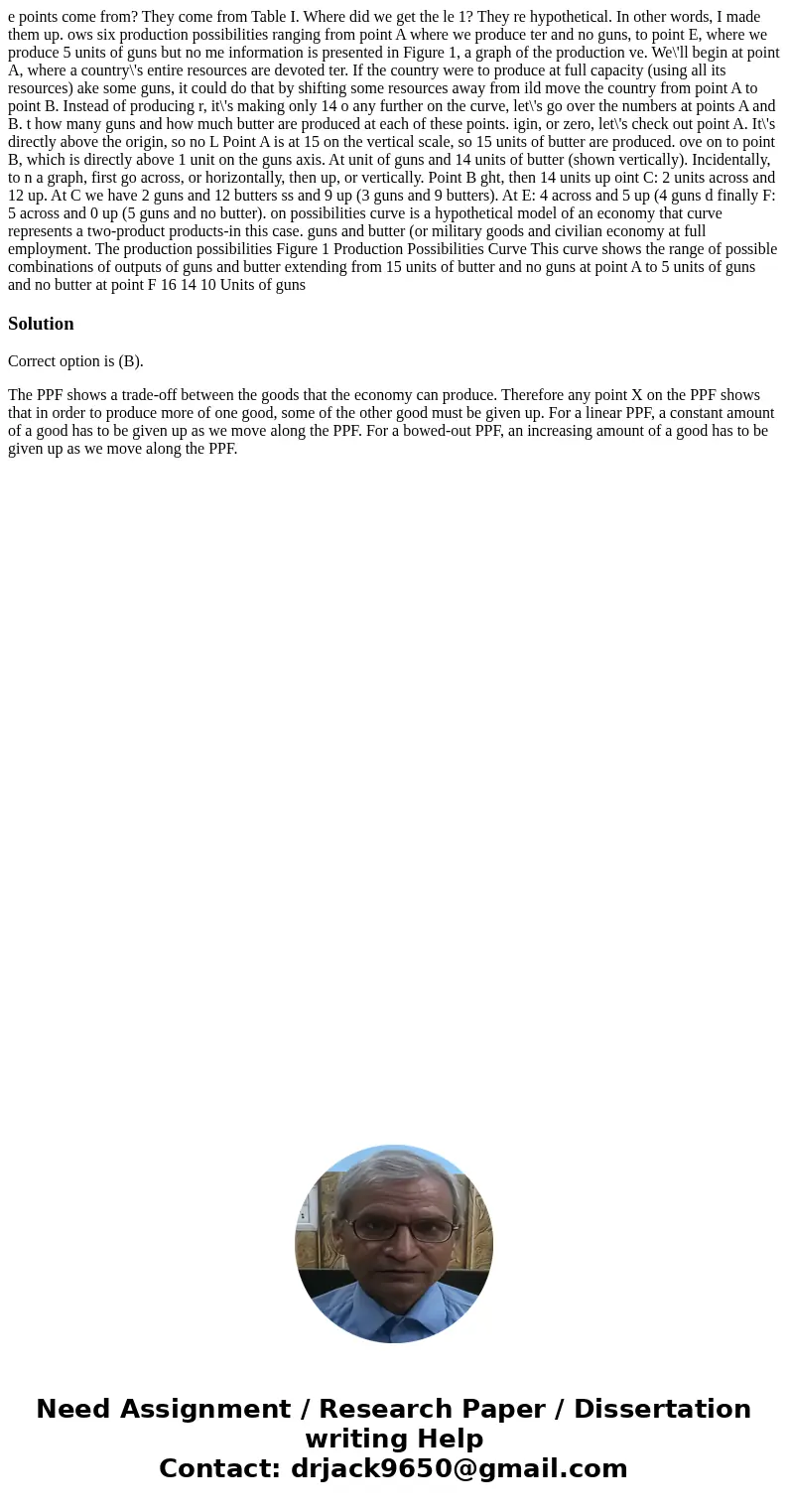e points come from They come from Table I Where did we get t
e points come from? They come from Table I. Where did we get the le 1? They re hypothetical. In other words, I made them up. ows six production possibilities ranging from point A where we produce ter and no guns, to point E, where we produce 5 units of guns but no me information is presented in Figure 1, a graph of the production ve. We\'ll begin at point A, where a country\'s entire resources are devoted ter. If the country were to produce at full capacity (using all its resources) ake some guns, it could do that by shifting some resources away from ild move the country from point A to point B. Instead of producing r, it\'s making only 14 o any further on the curve, let\'s go over the numbers at points A and B. t how many guns and how much butter are produced at each of these points. igin, or zero, let\'s check out point A. It\'s directly above the origin, so no L Point A is at 15 on the vertical scale, so 15 units of butter are produced. ove on to point B, which is directly above 1 unit on the guns axis. At unit of guns and 14 units of butter (shown vertically). Incidentally, to n a graph, first go across, or horizontally, then up, or vertically. Point B ght, then 14 units up oint C: 2 units across and 12 up. At C we have 2 guns and 12 butters ss and 9 up (3 guns and 9 butters). At E: 4 across and 5 up (4 guns d finally F: 5 across and 0 up (5 guns and no butter). on possibilities curve is a hypothetical model of an economy that curve represents a two-product products-in this case. guns and butter (or military goods and civilian economy at full employment. The production possibilities Figure 1 Production Possibilities Curve This curve shows the range of possible combinations of outputs of guns and butter extending from 15 units of butter and no guns at point A to 5 units of guns and no butter at point F 16 14 10 Units of guns 
Solution
Correct option is (B).
The PPF shows a trade-off between the goods that the economy can produce. Therefore any point X on the PPF shows that in order to produce more of one good, some of the other good must be given up. For a linear PPF, a constant amount of a good has to be given up as we move along the PPF. For a bowed-out PPF, an increasing amount of a good has to be given up as we move along the PPF.

 Homework Sourse
Homework Sourse